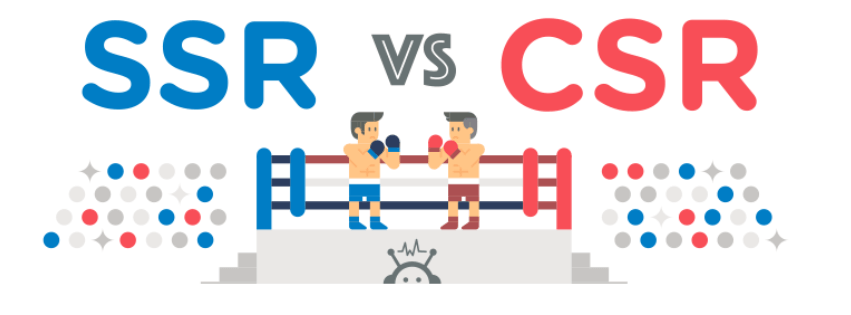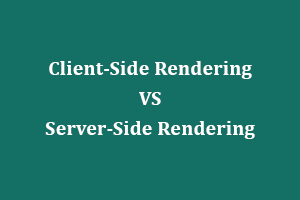
What is Client-Side Rendering?
Client-Side Rendering means that the web application’s content is rendered on the browser through Javascript, rather than on the server-side.
What are the benefits of using Client-Side Rendering:
High Performance: It will not re-render the entire page as traditional HTML pages, instead, it re-render the content of the page as per the need so it saves a lot of computation power.
Reusable Component: With the help of Client-Side Rendering we are able to use UI components without sending requests to the server each time.
Some drawbacks of Client-Side Rendering:
The speed at initial State: CSR loads the whole Javascript First time, and after that re-render the particular content according to the requirement, but the first loading takes much more time than Server-Side Rendering.
SEO Problem: Search Engine Optimization is a technique due to which the website appears on the Google Search Results. To discuss this problem let’s take an example, Google Bots has something called Second Wave of Indexing. In this process, they crawl and index the HTML of the first page, then come back to render the Javascript when resources become available.
In this approach, the javascript content might be missed and not be included in the Google Index. This is not a problem in Server-Side Rendering because all the Data are rendered on the Server Side and available at Starting.
What is Server-Side Rendering?
Server-Side Rendering means that the web application’s content is fetched from the Server and displayed.
What are the benefits of using Server-Side Rendering:
Faster Initial Page Load: We know that in SSR all the content is rendered on the Server Side as Pre Populated, so when the user requests the particular website then the Page shows up without delay.
SEO Friendly: As like CSR where all the data is not available at the initial time so when the Google Bot crawls on the page it doesn’t get all the data, but in SSR all the data is available to Google Bot at the elementary stage.
Some drawbacks of Server-Side Rendering:
High Server Load: The browser is sending requests to the server as users need to change the page on the website.
Time Consuming: As we know all the data is rendered on the server, so it takes some time to send a request and response between the server and the client.
Difference Between Client-Side and Server-Side Rendering:
Client-Side Rendering manages the routing dynamically without refreshing the page and re-renders only the content of the page every time the user requests a different page/route.
But on the other hand in Server-Side Rendering, it displays the entire page on the first load as it is preloaded on the server, unlike Client-Side Rendering which displays a blank page first.
Conclusion:
In the end, we can say that the SSR approach helps us to improve SEO and google ranking of the website, and also improves the first-time Load of the website unlike CSR where data are rendered on the browser, but on the other hand, it makes the server busier. If you want to create a Single Page Application you can go with the CSR because it re-renders only the content without refreshing the entire page which gives your website a faster experience.
If you have skills in PHP programming and you want to enhance your career in this field, a PHP certification from StudySection can help you reach your desired goals. Both beginner level and expert level PHP Certification Exams are offered by StudySection along with other programming certification exams.




